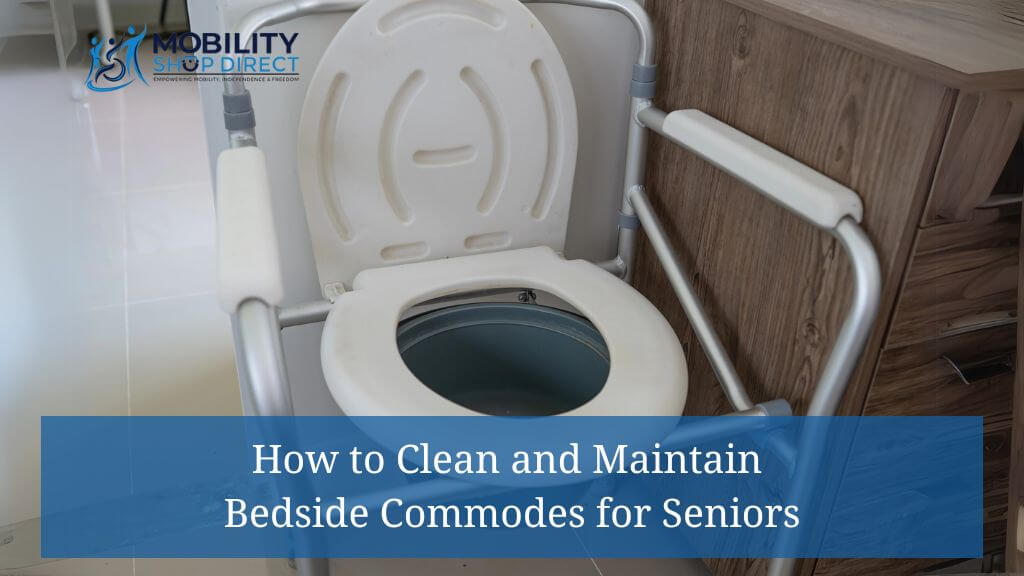Caring for a senior loved one comes with numerous responsibilities, but ensuring their comfort and hygiene shouldn’t be a source of stress. One essential yet often overlooked tool for maintaining their dignity and health is a properly maintained bedside commode. While convenient, it also plays a critical role in promoting safety and overall well-being. But without the right cleaning and upkeep practices, a bedside commode can quickly become a hassle—or worse, a health hazard.
So how can you ensure a bedside commode is both hygienic and long-lasting? By establishing effective daily cleaning routines, selecting appropriate disinfectants, conducting regular safety inspections, and understanding the key maintenance principles, you can make this care task simpler and more manageable. By the end of this guide, you’ll feel well-prepared to handle even the messiest situations with efficiency and care.
Let’s explore easy, effective practices that will keep the commode clean, safe, and durable, ensuring comfort and dignity for seniors.
Table of Contents
- Introduction
- Key Takeaways
- Understanding the Importance of Bedside Commode Hygiene
- Establishing a Daily Cleaning Routine for Bedside Commodes
- Choosing the Right Disinfectants for Safe Cleaning
- Conducting Regular Safety and Maintenance Checks
- Conclusion
Key Takeaways
Proper maintenance of a bedside commode not only ensures its cleanliness but also promotes the safety, dignity, and overall quality of life for seniors. Keep these key tips in mind:
- Establish a Daily Cleaning Routine: Clean the commode thoroughly after every use with mild soap and warm water to eliminate stains and odors.
- Choose Safe and Effective Disinfectants: Opt for hospital-grade disinfectants that are non-abrasive to maximize hygiene without damaging the equipment.
- Conduct Routine Inspections: Check for cracks, rust, or loose parts regularly to maintain safety and functionality.
- Store Properly When Not in Use: Keep the commode in a dry, clean area to prevent moisture damage and extend its lifespan.
- Create a Maintenance Schedule: Perform weekly deep cleaning and monthly inspections to keep the commode in optimal condition for the long haul.
For more on the benefits of proper upkeep, read our post on how bedside commodes support senior safety.
Understanding the Importance of Bedside Commode Hygiene
Why a Clean Bedside Commode Matters for Elderly Care
Maintaining proper hygiene for a bedside commode goes beyond aesthetics—it’s a key part of safeguarding the health and dignity of seniors. Older adults often have weakened immune systems, so it’s critical to prevent infections caused by bacteria or viruses on unclean surfaces. A sanitized commode reduces these risks while also eliminating unpleasant smells or stains that could make users uncomfortable.
Cleanliness also shows respect. A fresh-smelling commode reassures seniors that their care matters and helps them feel more at ease.
Common Risks of Poor Maintenance for Seniors
Letting hygiene slip can cause problems fast:
- Health Risks: Waste residue attracts harmful bacteria like E. coli, leading to infections or other complications.
- Safety Hazards: Buildup can make surfaces slippery, raising the risk of falls—especially dangerous for seniors with mobility issues.
- Faster Wear and Tear: Dirt and grime speed up damage, which could lead to costly repairs or early replacement.
If you're still exploring whether a commode is the right fit, check out this beginner's guide to bedside commodes.
Establishing a Daily Cleaning Routine for Bedside Commodes
Step-by-Step Guide to Cleaning Bedside Commodes After Use
Here’s how to clean effectively after each use:
- Empty Waste: Pour contents into the toilet. Rinse the container with warm water.
- Wash Surfaces: Use a soft cloth or sponge with mild soap. Avoid abrasive tools.
- Disinfect: Apply a hospital-grade disinfectant, especially on handles and high-touch areas.
- Dry Thoroughly: Use a towel or let parts air-dry before putting them back together.
Always wear gloves and wash your hands well afterward.
Recommended Cleaning Products: Mild Soaps and Water
Stick with unscented or lightly scented soaps that won’t irritate skin or degrade the commode’s materials. This approach is safe for both plastic and metal parts and works well for daily use.
Preventing Odors and Stains Through Regular Care
A few simple habits go a long way:
- Add a splash of white vinegar to the cleaning water.
- Use disposable liners to reduce mess and stains.
- Wipe the frame and seat daily, even if it wasn’t used.
Want more details? Here’s a full guide on how to clean and care for bedside commodes.
Choosing the Right Disinfectants for Safe Cleaning
What to Look for in a Disinfectant for Medical Equipment Hygiene
Focus on options that are:
- Hospital-Grade: Effective against bacteria, viruses, and fungi.
- Non-Abrasive: Won’t scratch or damage surfaces.
- Quick-Drying: Reduces the risk of mold or moisture damage.
List of Non-Abrasive, Hospital-Grade Disinfectants
- Clorox Healthcare Hydrogen Peroxide Cleaner Wipes
- Lysol Professional Disinfectant Spray
- Diversey Oxivir TB Ready-to-Use Cleaner
How to Balance Safety and Effectiveness in Cleaning Senior Aids
Clean in a space with good airflow. If the user is sensitive to strong smells, switch to fragrance-free products or diluted vinegar solutions. Always spot test first.
Conducting Regular Safety and Maintenance Checks
Inspecting the Bedside Commode for Cracks, Rust, or Loose Parts
Routine checks can catch issues early:
- Look for cracks or worn areas that could leak or cause discomfort.
- Remove rust before it spreads and weakens the frame.
- Tighten any loose screws or fittings.
When to Repair vs. Replace a Bedside Commode
If rust, odor, or instability keeps returning, repairs may not be worth it. At that point, it’s better to get a new model. You can browse commode options here.
How Long Bedside Commodes Typically Last and Signs of Wear
On average, expect 3–5 years of use with proper care. Signs it’s time for a new one include faded parts, lingering odors, or an unstable frame. Always check the product’s guidelines for replacement timelines. If you're unsure what kind to choose, this guide can help you compare options.
Conclusion
Maintaining a bedside commode isn’t just about keeping it clean—it’s about protecting the health and comfort of your loved one. With a simple daily routine, safe disinfectants, and regular inspections, you can turn a potentially stressful task into a straightforward habit.
The time you spend caring for this essential tool pays off in peace of mind and better quality of life for everyone involved. Start building these habits today and know you're providing care that truly makes a difference.



